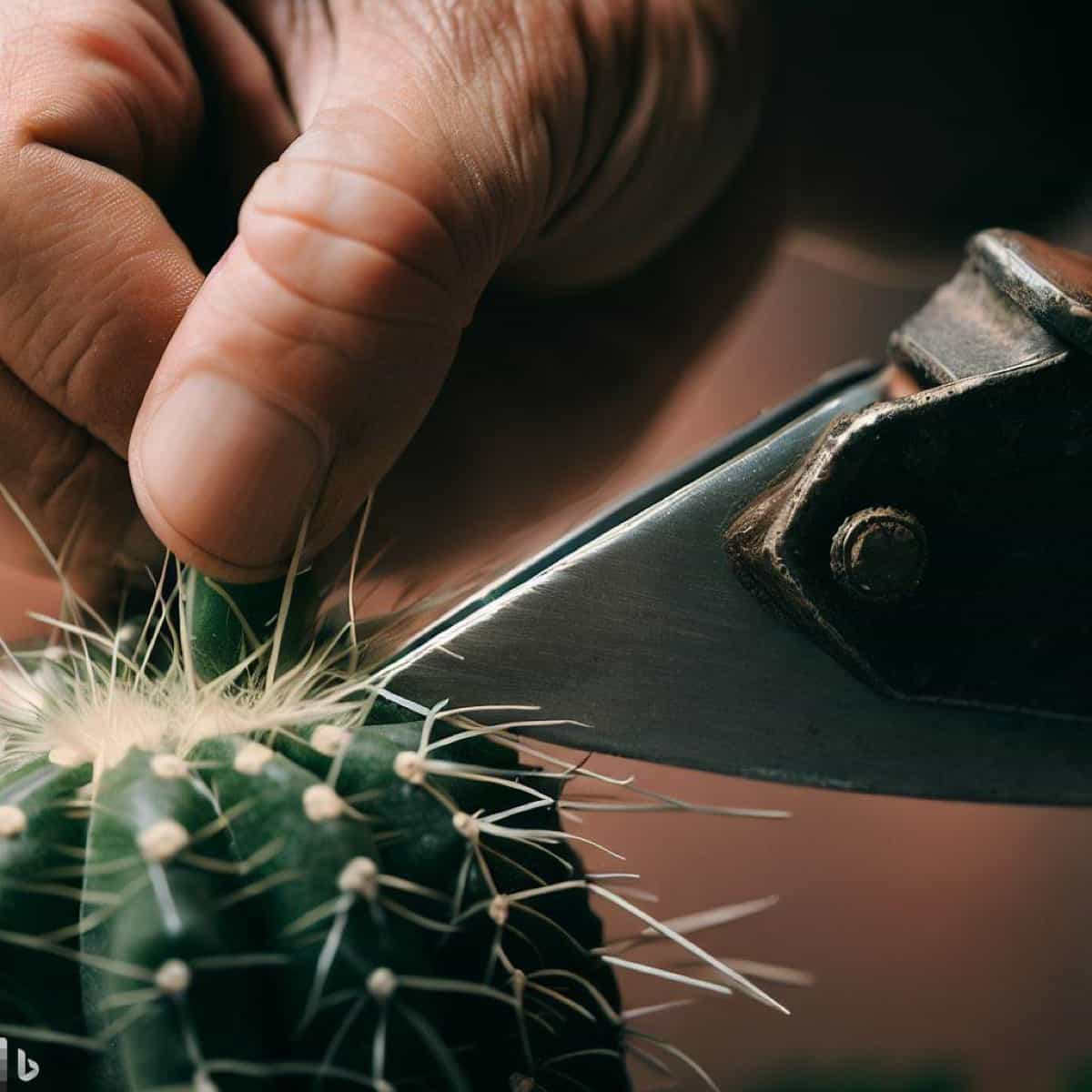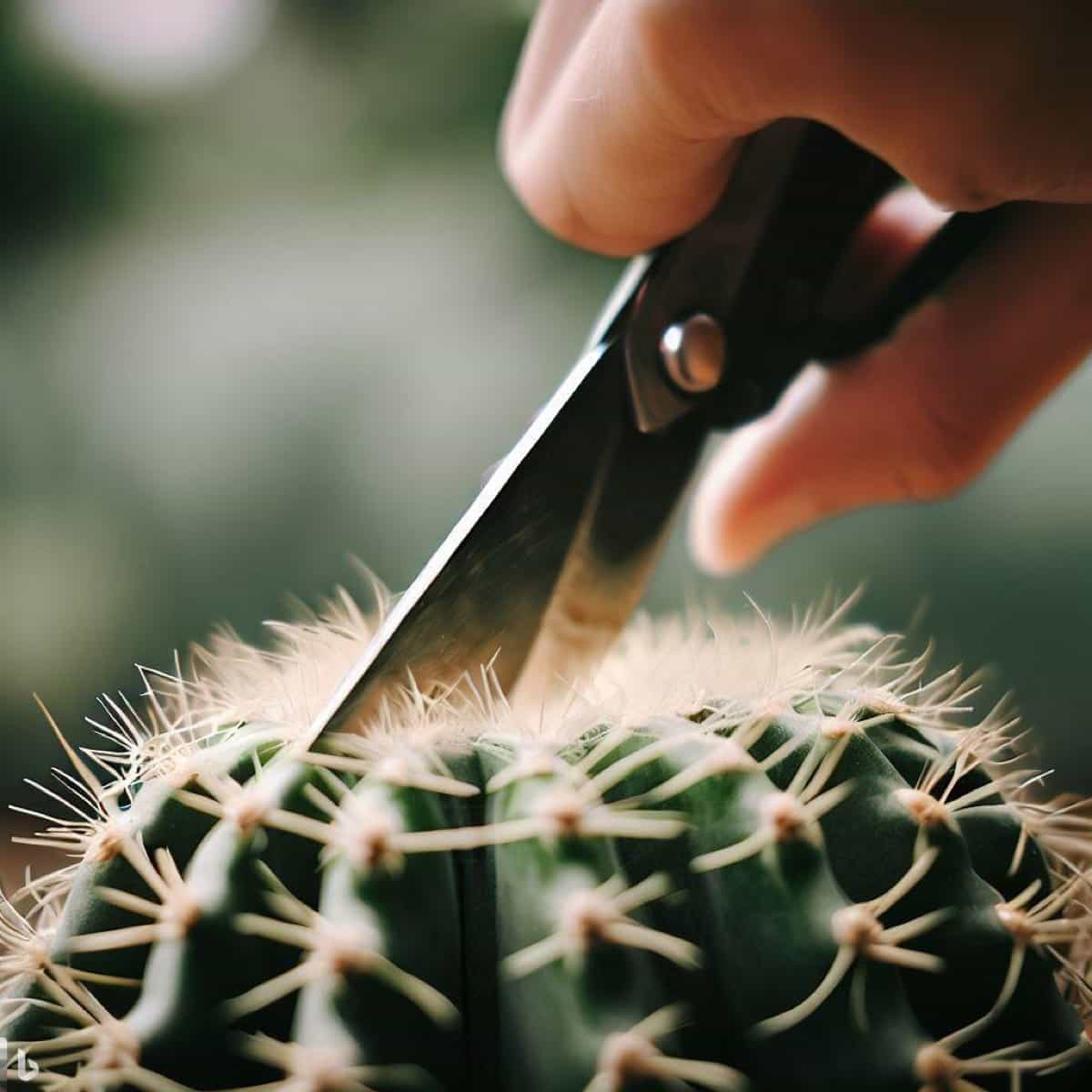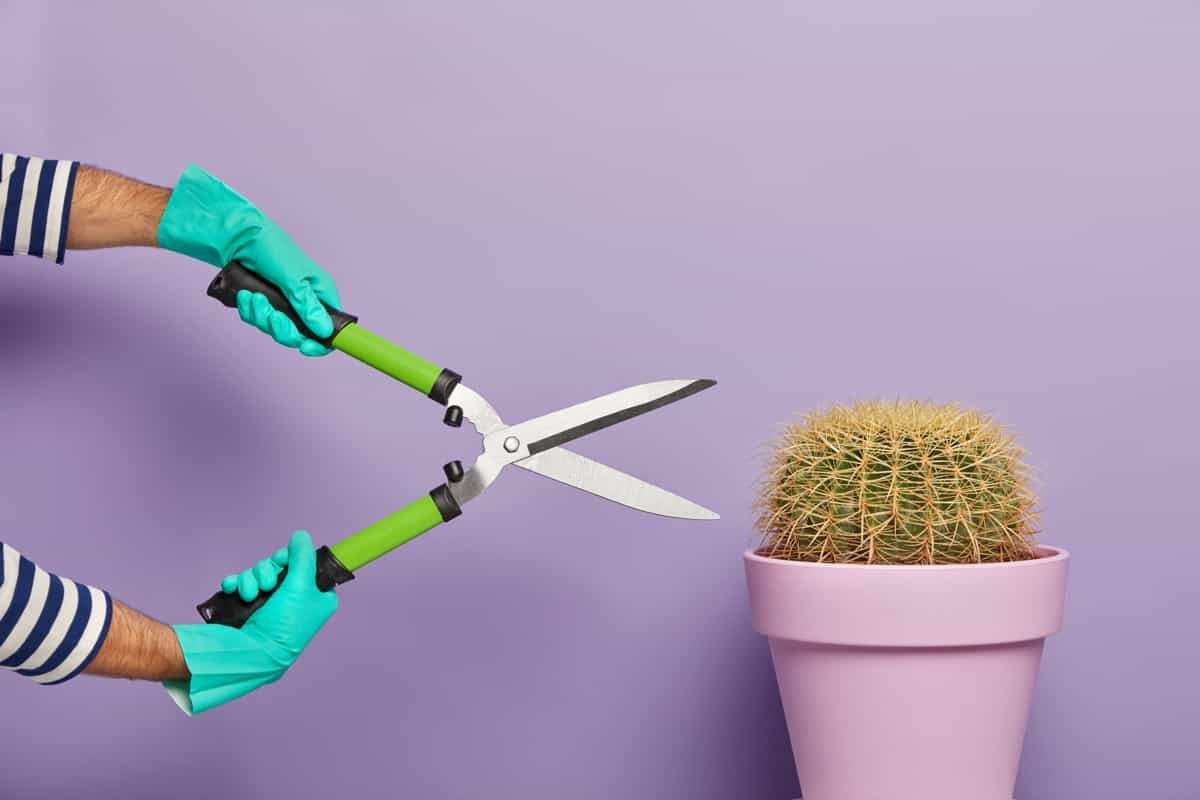Cacti are unique and fascinating plants requiring occasional pruning to maintain health and shape. Knowing how to trim a cactus properly is essential whether you have a small indoor cactus or a large outdoor one. This article will briefly discuss the necessary tools and techniques for pruning overgrown cacti.

Understanding the Different Types of Cacti and Their Growth Patterns
There are various types of cacti, each with its unique growth patterns. The columnar cacti, such as the Saguaro and Organ Pipe, grow tall and upright, reaching heights up to 50 feet. The globular cacti grow rounded, like the Golden Barrel and the Moon Cactus.
The trailing cacti, such as the Christmas Cactus and the Rhipsalis, have long, hanging stems. Lastly, the clumping cacti, like the Bunny Ears and the Old Man Cactus, form clusters of stems. Understanding these different types of cacti and their growth patterns can help us appreciate their beauty and cultivate them successfully.
Cactus Pruning Tools and Equipment for Trimming
Cactus pruning requires specialized tools and equipment to ensure a safe and effective trimming process. These tools are specially designed to handle the unique needs of cacti and minimize the risk of injury. The cactus gripper tools include the long-handled Cactus Gripper, extended-length Cactus Grabber, and Extra-Long Tweezers. This assortment of gripping aids will keep your hands away from needles, help you reach into tight spots, and keep your cactus and succulents healthy and beautiful.
One essential tool is the pruning shears, which have sharp blades for precise cuts and a comfortable grip for easy handling. A pruning saw is necessary for thicker branches, as it has a serrated blade that can cut through tough wood easily. Additionally, thick gloves protect your hands from the cactus spines.
Preparing Yourself and the Cactus for Trimming
- Start by equipping yourself with safety gear, including gloves, goggles, and long-sleeved clothing.
- Inspect the cactus for any signs of disease or pests. Treat any issues before proceeding with trimming.
- Clean your tools, such as pruning shears, with a disinfectant to avoid spreading potential diseases to the cactus.
- Identify the areas that need trimming, such as dead or damaged branches. Trim these sections carefully, ensuring a clean cut close to the main stem.
- Dispose of the trimmed branches properly to prevent any potential harm to you or the environment.
- After trimming, provide the cactus proper care, including watering and appropriate sunlight exposure.
- Monitor the cactus for signs of stress or infection following the trimming process.
Step-By-Step Guide to Trimming a Cactus Safely
- Prepare Your Cactus: Gently hold the cactus in place using your tongs or wrapped-up newspaper.
- Identify the Cut Area: Look for the areas that require trimming, whether overgrown, damaged, or diseased.
- Make the Cut: Make a clean cut on the identified area using your pruners or knife. Cut at a downward angle to allow water runoff, reducing the chance of rot.
- Seal the Cut: After cutting, the cactus needs time to heal. Leave the cactus in a dry, shaded area for a few days to allow the cut to dry and form a callous.
- Dispose of the Cuttings: Safely dispose of them or consider propagating them if they’re healthy!
In case you missed it: Best Cactus Landscaping Ideas: Strategies and Techniques

Identifying and Removing Dead or Damaged Parts of the Cactus
Identifying and removing dead or damaged parts of a cactus is essential to ensure its overall health and longevity. Regularly inspecting your cactus can identify any signs of dead or damaged parts, such as discoloration, softness, or dryness. Once identified, it is crucial to remove these parts promptly to prevent disease or further damage.
Clean and sharp pruning shears should be used to remove dead or damaged parts. Make a clean cut above the healthy tissue, ensuring no jagged edges or stubs remain. Properly disposing of the removed parts is also important to prevent any potential spread of disease.
Pruning Overgrown or Unruly Cacti to Maintain Shape and Size
Pruning overgrown or unruly cacti is essential to maintain their shape and size. Cacti grow excessively and can become unmanageable and lose their aesthetic appeal. To begin, wear protective gloves to avoid injury from the spines. Use sharp, clean pruning shears to make precise cuts.
Start by removing any dead or damaged portions of the cactus. Next, identify catus arms in unwanted directions or overcrowding. Trim these back to promote a more balanced appearance. Lastly, step back and assess the cactus’s overall shape, making additional cuts to maintain its desired form.
Dealing With Pests and Diseases During the Trimming Process
Dealing with pests and diseases during the cacti trimming process is crucial to maintaining their health and vitality. Pests such as mealybugs, spider mites, and scale insects can infest cacti, causing damage to the plant’s structure and hindering growth. To combat these pests, regular inspection of the cacti is necessary.
If an infestation is detected, the affected areas should be trimmed. Diseases like root rot and fungal infections can also affect cacti during trimming. Ensure to drain the water well and avoid overwatering to prevent diseases. Applying a fungicide may be necessary to control fungal infections.
In case you missed it: How to Make a Cactus Garden Outdoors: A Guide for Designing, Planting, and Care

How to Trim a Cactus Without Killing It and Can I Cut My Cactus in Half?
If you want to trim a cactus without killing it, there are a few important steps. Firstly, ensure you have the right tools, such as clean and sharp pruning shears or scissors. Before cutting, identify the areas that need trimming, such as dead or diseased parts. Carefully remove these sections, ensuring you make clean cuts at a 45-degree angle. To prevent infections, apply a fungicide or cinnamon powder to the cut areas. Cutting a cactus in half is generally not recommended as it can damage the plant.
Proper Disposal of Trimmed Cactus Parts
When disposing of cactus trimmings, it is important to avoid throwing them in the trash. Instead, it is recommended to place the trimmed parts in a sturdy bag or container to avoid injury. Cactus trimmings can be taken to a local composting facility or green waste recycling center, where they can be properly processed. Alternatively, add cactus trimmings to your compost pile if you have a home composting system. Proper disposal of cactus trimmings helps to minimize waste and promote sustainability.
Aftercare Tips to Promote Healthy Regrowth After Trimming
- Firstly, allow the cut ends of the cactus to be callous over for a few days before replanting. This will help prevent infections.
- Secondly, provide adequate sunlight, as cacti thrive in bright light conditions. However, avoid direct sunlight during the hottest parts of the day to prevent scorching.
- Lastly, water the cactus sparingly, allowing the soil to dry between waterings. Overwatering can cause roots to rot and hinder regrowth.
Common Mistakes to Avoid When Trimming a Cactus
To ensure a successful trimming process, avoiding common mistakes that can harm the cactus is important. One common mistake to avoid is trimming the cactus too much. Over-trimming can cause stress to the plant and inhibit its growth. Another mistake to avoid is using dull or dirty tools. This can lead to uneven cuts and increase the risk of infection. Additionally, wearing protective gloves and clothing is crucial to avoid injury from the cactus’ thorns.
In case you missed it: 10 Common Problems With Indoor Cactus Plants: How to Fix, Treatment, and Solutions

Conclusion
By following the above-discussed guidelines and using the right tools, you can trim your cactus successfully and keep it healthy and attractive. Remember always to prioritize safety and take care to preserve the overall shape and health of the plant.
- Feed Your Flock for Less: Top 10 Tips to Save on Chicken Feed
- Ultimate Guide to Ossabaw Island Hog: Breeding, Raising, Diet, and Care
- Hatching Answers: The Top 10 Reasons Your Chickens Aren’t Laying Eggs
- Eggs and Economics: Breaking Down the Cost of Raising Backyard Chickens
- Defend Your Greens: Proven Methods to Keep Iguanas Out of Your Garden
- Ultimate Guide to Cinnamon Queen Chicken: A Comprehensive Guide for Beginners
- Ultimate Guide to California Tan Chicken: Breeding, Raising, Diet, Egg-Production and Care
- Ultimate Guide to Marsh Daisy Chicken: Breeding, Raising, Diet, and Care
- 10 Types of Chicken Farming Businesses You Can Start for Profits